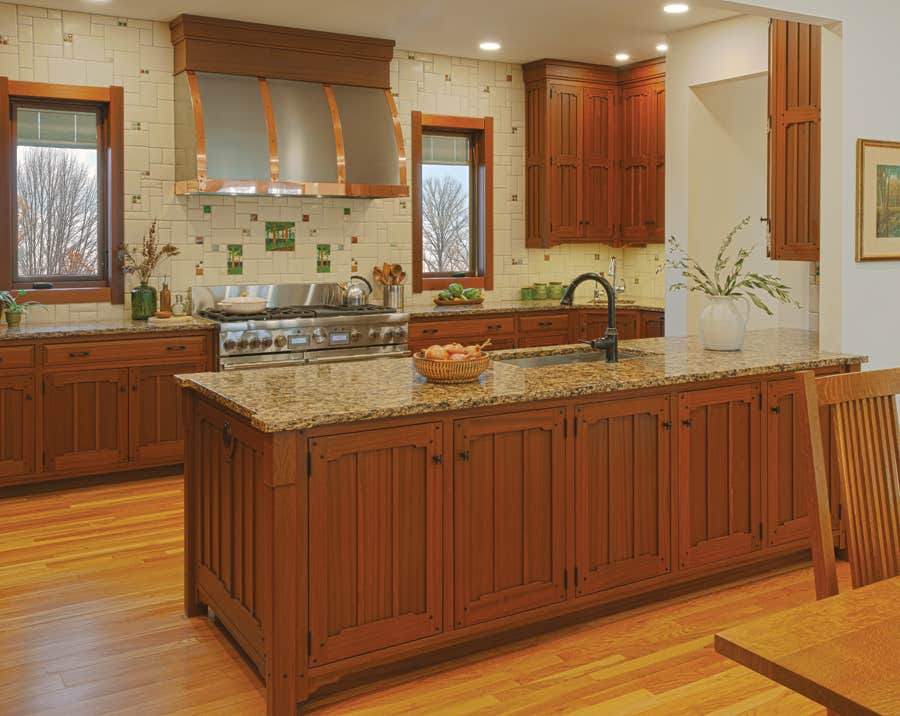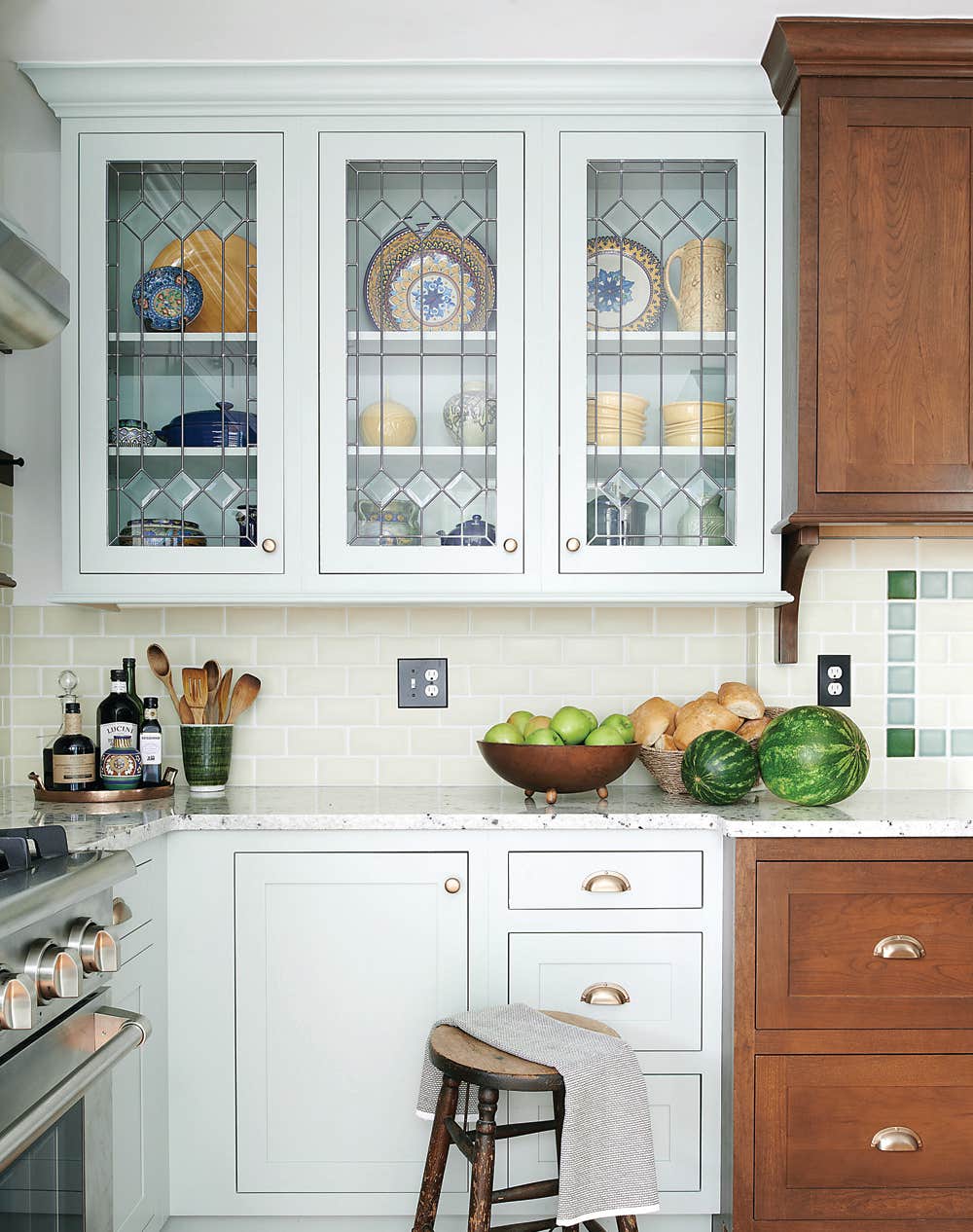Putting Back a Period Kitchen
Untouched and unusable, a kitchen in Portland, Oregon, is sympathetically remodeled with elements of the 1910s.
The Youngs were living in a smaller house back in 1986 when the house next door, a three-story Foursquare built in 1909, went on the market. The once-fine, six-bedroom home had become a rooming-house in the 1940s. When they toured it out of curiosity, Sig Young remembers thinking, “Glad it’s not ours—too much work!”
Chatting with the real-estate agent next door, Jack Young heard about a client shopping for a house smaller than the big Foursquare. While Sig was off to the beach for the weekend, Jack asked the agent how much their house was worth. To make a long story short, Sig came home to find that the client had made an offer—on the Youngs’ house! The agent had also talked Jack into buying the Foursquare.
It would be years until they got to the kitchen remodeling. “The back kitchen had been virtually untouched since the 1920s,” Jack says. It was one big room with no built-ins or cabinets and, oddly, a 6½'-long sink that blocked the basement door. A separate butler’s pantry had been the functioning kitchen since the 1970s. “We agonized over what to do for years,” says Jack. Meantime, they removed wallpaper in the dining room, revealing signs of the original built-ins. Jack, who is a talented woodworker, rebuilt them with wood countertops.
In August of 2011, Sig attended a photo shoot (for this magazine) at another Portland house, and there she met restoration consultant Karla Pearlstein. The two women chatted about Sig’s kitchen and made a date to meet there. Wires got crossed, however, and Karla showed up with five members of the kitchen-tour committee from the Architectural Heritage Center, who expected to see a restored kitchen. There was awkward silence at the sight of the architectural chaos. “Still,” Sig avows, “they all saw potential!”
“It was exciting because the kitchen was so intact, including a milk pass-through and scored plaster walls,” says Karla, who suggested they bring in designer Matthew Roman and general contractor Mike Edeen of Artisan Woodworks. The three would collaborate to make the space usable, yet keep the feel of a 1910s kitchen.
“When Matthew returned with drawings of the butler’s pantry that included glass-front cabinets and wooden counters like the ones I’d built for the dining room,” Jack remembers, “I said, ‘Wow!’”
For the back kitchen, Roman had designed a full wall of cabinets to hide a refrigerator and a pullout pantry. Jack had entertained just such an idea, but “I didn’t have a clue how to do it.” Roman’s drawings had sealed the deal.
Jack and one of his sons tackled the demolition work, carefully recycling elements for another kitchen in the basement. To bring the original electrical junction box up to code, it had to be accessible. Jack devised a door handle from vintage electrical knife switches, which are found in abundance at Old Portland Salvage. (The building inspector was awed: “That’s so cool!” he said.)
A remnant of colorful linoleum was uncovered at the bottom of the old dumbwaiter (which had brought stove wood up from the basement). Sig contacted Gracewood Design to see if the design could be re-created on a canvas floorcloth. “We’d seen their ad in Arts & Crafts Homes,” Sig says, “but we didn’t realize they were right here in Portland!” The finished product was dubbed ‘Signoleum,’ and when a derivative version was painted for the butler’s pantry, it was called ‘Signoleum, Too.’”
Sig and Jack say they couldn’t be happier with how it all turned out.
The Experts
Restoration Consultant Karla Pearlstein, Restoring History
Designer Matthew Roman, Roman Design
Floorcloth Design Gracewood Design
Materials
Paint: Miller Paint
Reproduction lighting: Schoolhouse
Hardware: Shenandoah Antique Restoration Hardware and Rejuvenation
Ladder Kit: CS Hardware
Subway Tile: Daltile
Donna Pizzi is a writer and producer for film and print, and co-owner of Blackstone Edge Studios with her husband, photographer Philip Clayton–Thompson. Over three decades, Pizzi has scouted out and written countless articles about home restoration for Arts & Crafts Homes and Old House Journal.








